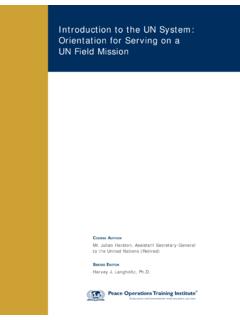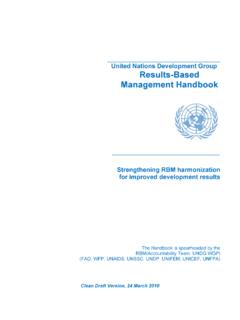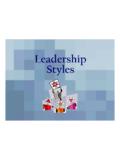Transcription of GALVESTON ORIENTATION AMNESIA TEST …
1 1027 Rev Esc Enferm USP2009; 43(Spe) OrientationAmnesia Test ( goat )Silva SCF, Sousa RMCG alveston ORIENTATION AMNESIA Test ( goat ) GALVESTON ORIENTATION AMNESIA TEST ( goat ) GALVESTON ORIENTATION AMNESIA TEST ( goat )RESUMOO trauma cr nio-encef lico contuso (TCEC) freq entemente seguido pela amn siap s-traum tica (APT), caracterizada comoum estado transit rio de confus o e deso-rienta o. Sua dura o tem sido utilizadapara quantificar a gravidade do TCEC e pre-ver dist rbios nas fun es cognitivas, assimcomo para antever as altera es na capaci-dade funcional das v timas p s-trauma.
2 OGalveston ORIENTATION AMNESIA Test ( goat ) o primeiro instrumento sistematizado cri-ado e o mais amplamente utilizado paraavaliar a APT. Este artigo apresenta esseinstrumento, as bases conceituais para seudesenvolvimento e a adapta o e valida odo goat para cultura brasileira. Al m dis-so, descreve sua aplica o e comenta asrestri es do seu uso. Resultados de pes-quisas realizadas em nosso meio contribu- ram para as evid ncias sobre a validade doGOAT. Tamb m apontaram os indicadoresdo momento p s-trauma em que o goat deve ser aplicado e destacaram as dificul-dades no uso desse ndices de Gravidade do cranianos de valida PhD by the University of S o Paulo College of Nursing.
3 Professor of the Nursing and Medicine Undergraduate Courses and of the Nursing Graduate Programat Centro Universit rio S o Camilo. S o Paulo, SP, Brazil. 2 Free-Lecturer of the Medical-Surgical Nursing Department at University ofS o Paulo College of Nursing. S o Paulo, SP, Brazil. ARTICLES ilvia Cristina F rbringer e Silva1, Regina M rcia Cardoso de Sousa2 ABSTRACTC losed head injury (CHI) is frequently fol-lowed by post-traumatic AMNESIA (PTA) andis characterized by a transitory state of con-fusion and disorientation.
4 The PTA dura-tion has been used to quantify the CHI se-verity and to predict disorders in cognitivefunctions, as well as to foresee any alter-ation in the functional capacity of post-trauma victims. The GALVESTON OrientationAmnesia Test ( goat ) is the first system-atized instrument created, and the mostbroadly applied, to assess PTA. This articlepresents the goat , the conceptual basis forthe development of the instrument, and itsadaptation and validation to the Brazilianculture. In addition, the article describes theapplication of the instrument and makescomments on the restrictions of its use.
5 Bra-zilian research results showed evidences ofthe goat 's validity. They also point to theindicators of post-trauma conditions inwhich the goat must be applied, and high-light the difficulties in the application of Severity injuries, trauma cr neo-encef lico contuso (TCEC)es frecuentemente seguido por la amnesiapos-traum tica (APT), caracterizada comoun estado transitorio de confusi n y deso-rientaci n. Su duraci n ha sido utilizadapara cuantificar la severidad del TCEC y pre-ver alteraciones en las funciones cogni-tivas, tanto como para antever las dificul-tades en la capacidad funcional de las v cti-mas pos-trauma.
6 El GALVESTON OrientationAmn sia Test ( goat ) es la primera encues-ta sistematizada que fue creada y el masam-pliamente utilizada para evaluar la publicaci n presenta esta encuesta, lasbases conceptuales para su desarrollo y laadaptaci n y validaci n del goat para lacultura brasile a. Adem s, describe su apli-caci n y limitaciones en el uso. Resultadosde pesquisas brasile as contribuyeron paralas evidencias sobre la validad del n apuntaron los indicadores del mo-mento pos-trauma en que el goat debe seraplicado y destacaron las dificultades en eluso de esa ndices de Gravedad del cerrados de la de validaci : 30/01/2009 Approved: 16/04/2009 Portuguese / Esc Enferm USP2009.
7 43(Spe) OrientationAmnesia Test ( goat )Silva SCF, Sousa RMCINTRODUCTIONThe GALVESTON ORIENTATION AMNESIA Test ( goat ) is aninstrument originally created by Levin, O'Donnel andGrossman and first published in 1979(1). It was born in theAmerican culture, and was adapted and validated to ourcultural environment in 2002(2). It is composed of tenquestions that assess post-traumatic AMNESIA (PTA) invictims of closed head injury (CHI) following the is often followed by PTA, and is defined as a transi-tory state of confusion and disorientation characterized byanterograde and retrograde AMNESIA , and behaviordisorders, among them insomnia, psychomotor agitation,fatigue, confabulation, and occasionally serious affectiveand psychotic symptoms(3-5).
8 The resolution of PTA is her-alded by the return of ORIENTATION and continuous memory. Anterograde AMNESIA is the major characteristic of PTAand is sometimes used as its synonym. However, a dis-tinction between these two clinical conditions is necessary,since the first refers to one's incapacity to form newmemories after a determined event and is a specificmemory deficiency. On the other hand, PTArefers to a sub-acute state following CHI thatcan include the previously describedbehavioral alterations as well as alterationsin the retrograde memory(6).
9 In addition , theanterograde memory deficiency observedduring PTA is specifically identified in thedeclarative memory that refers to the recordof facts, events or knowledge, while theprocedural memory (memory of motor orsensorial capacities or abilities) is spared(7).The duration of PTA after CHI is frequentlyused to quantify the severity of this type of trauma and topredict the functional capacity of victims. Thus, there areseveral authors that propose this parameter to differentiatevictims according to distinct levels of CHI severity, and toassess its consequences.
10 The longer the PTA duration , theworse the expected functional result(4,8-11).The duration of this syndrome is also applied indeveloped countries as an indicator of rehabilitationfeasibility for patients who present with CHI(5,11-13). From thestudied behavioral sequelae , PTA has repeatedly revealeditself as the best isolated indicator to predict eithercognitive function problems or impairments in the victims'daily activities. In many cases, PTA is a better indicator thanthe duration and depth of the coma(8).

















